The lower east side is alive
with memories, a neighborhood still seeming to echo the calls of
immigrants crowded into tenements, peddlers hawking wares from
pushcarts, and children playing in the streets, the only open spaces to
be found. Early churches became synagogues for the Jews who came in
record numbers between 1880 and 1920. Some remain, but in recent years,
Latinos and Chinese have moved in, adding to the area’s rich history.
Meanwhile, Orchard Street tempts with bargains, and a hip, young
generation is rediscovering the old neighborhood. Nearby, the East
Village has its own layers of history, an early Dutch enclave that
changed from German to Jewish before becoming a 1960s haven for hippies
and the place where punk rock was born. A Ukrainian community has
remained through most of these changes, including recent gentrification.
|
Proving that change is the
rule in New York, the Lower East Side has emerged as the newest trendy
area for clubs, restaurants, and hip boutiques. Some residents are even
moving into the tenement buildings their great-grandparents fought to
escape from. Ludlow Street is one of the best streets to get a feel for
the current scene.
|


SightsLower East Side Tenement Museum Guided
tours inside a tenement building give an insight into the carefully
researched lives of one of three families who lived here; a
German-Jewish clan in 1874, an orthodox Jewish family from Lithuania in
1918, or a Sicilian Catholic family during the Depression in the 1930s. Orchard Street Orchard
Street became a street of shops in 1940, when Mayor Fiorello La Guardia
outlawed pushcarts in the city. Many merchants still put some of their
wares on the sidewalk on Sundays and lure customers with 20 to 30
percent off brand names. The Lower East Side Visitor Center offers free
tour each Sunday between April and December.
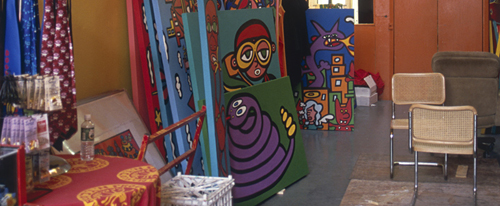
Orchard Street
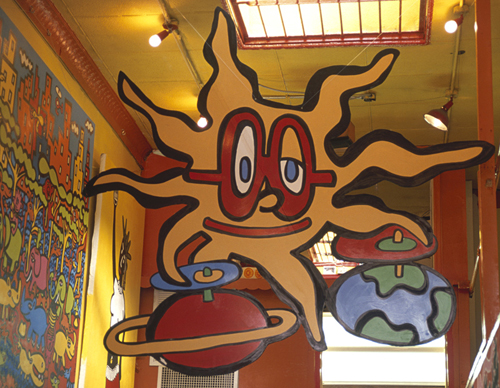
Art for sale, Orchard Street
New Museum of Contemporary Art Since
its founding in 1977, this provocative museum has mounted shows
featuring experimental work that other museums often overlook,
particularly new multimedia forms, which sometimes extend into
intriguing window displays. The museum opened in a new, cutting-edge
building designed by Tokyo-based architects Sejima and Nishizawa in late
2007. It features a bookstore, theater, learning center, and a café. Eldridge Street Synagogue A
National Historic Landmark. This 1887 Moorish-style synagogue was the
first house of worship built in the U.S. by Jewish immigrants from
Eastern Europe, from where 80 percent of American Jews come. As many as
1,000 people attended services here at the turn of the 20th century. As
congregants left the neighborhood, attendance waned, and the temple
closed in the 1950s. A 20-year restoration initiative was recently
completed and the synagogue has become a vibrant cultural center.
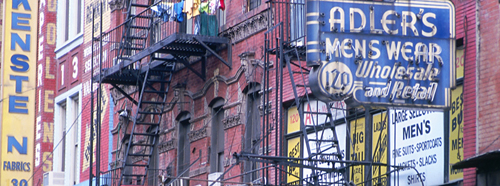
Street Scene
Beth Hamedrash Hagadol Synagogue Artists
can often be seen sketching this small, picturesque building. It was
constructed in 1850 as the Norfolk Street Baptist Church, but as the
neighborhood changed, the membership moved uptown, and in 1885 the
structure was converted to a synagogue by America’s oldest Russian,
Orthodox Jewish congregation. Gothic woodwork and the iron fence from
the original church remain. 60–64 Norfolk St Open by appointment Free
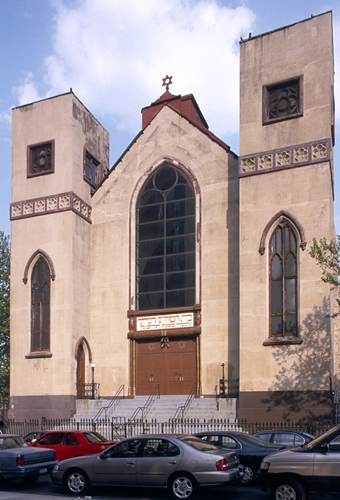
Beth Hamedrash Hagadol Synagogue
Guss’ Pickles One
of the survivors from the old days of the Jewish Lower East Side, and a
fixture for more than 80 years, Guss’ was even featured in the movie Crossing Delancey.
Fans stand in line on weekends for their fix from the barrels on the
sidewalk filled with pickles – sour and half-sour. Guss’ also does a
thriving business by mail, shipping all over the U.S.
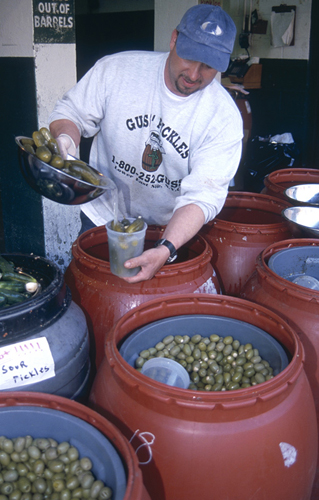
Guss’ Pickles
St. Mark’s Place Once
the heart of hippiedom, this block still has a counter-culture feel and
is headquarters for the East Village youth scene. Sidewalks are crowded
until late into the night with patrons of funky, punky bars and shops
selling music, books, T-shirts, vintage clothing, beads, posters, and
black leather everything. The place to get pierced or tattooed. St. Mark’s-in-the-Bowery Church The
second-oldest church in New York stands on land where Peter Stuyvesant,
governor of Dutch New York in the 1600s, had his private chapel.
Stuyvesant is also buried here. In the 1960s it served as one of the
city’s most politically committed congregations and continues to live on
the avant-garde edge.
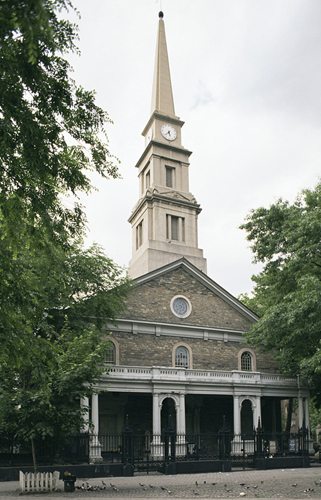
St. Mark’s-in-the-Bowery Church
Renwick Triangle This
handsome group of townhouses was created in 1861 by James Renwick, Jr.,
a prominent architect of the day. The houses are on land that was once
Peter Stuyvesant’s farm, developed by his descendants as stylish
residences.
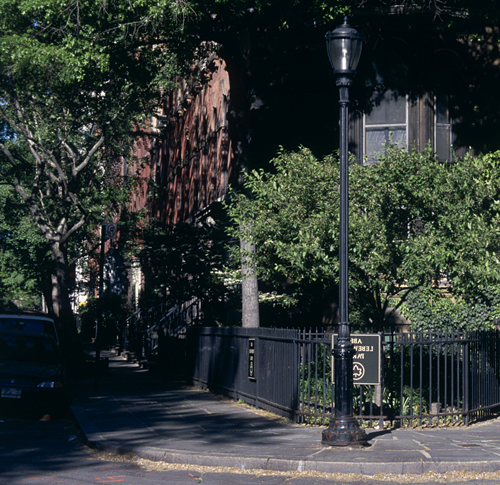
Renwick Triangle
Ukrainian Museum The
museum showcases a beguiling collection of Ukrainian costumes, lavishly
embroidered peasant blouses, colorful sashes, fancy sheepskin and fur
vests, wedding wreaths of yarn and ribbons. There are also ceramics,
jewelry, and the intricately designed Ukrainian Easter eggs known as pysanky.
|